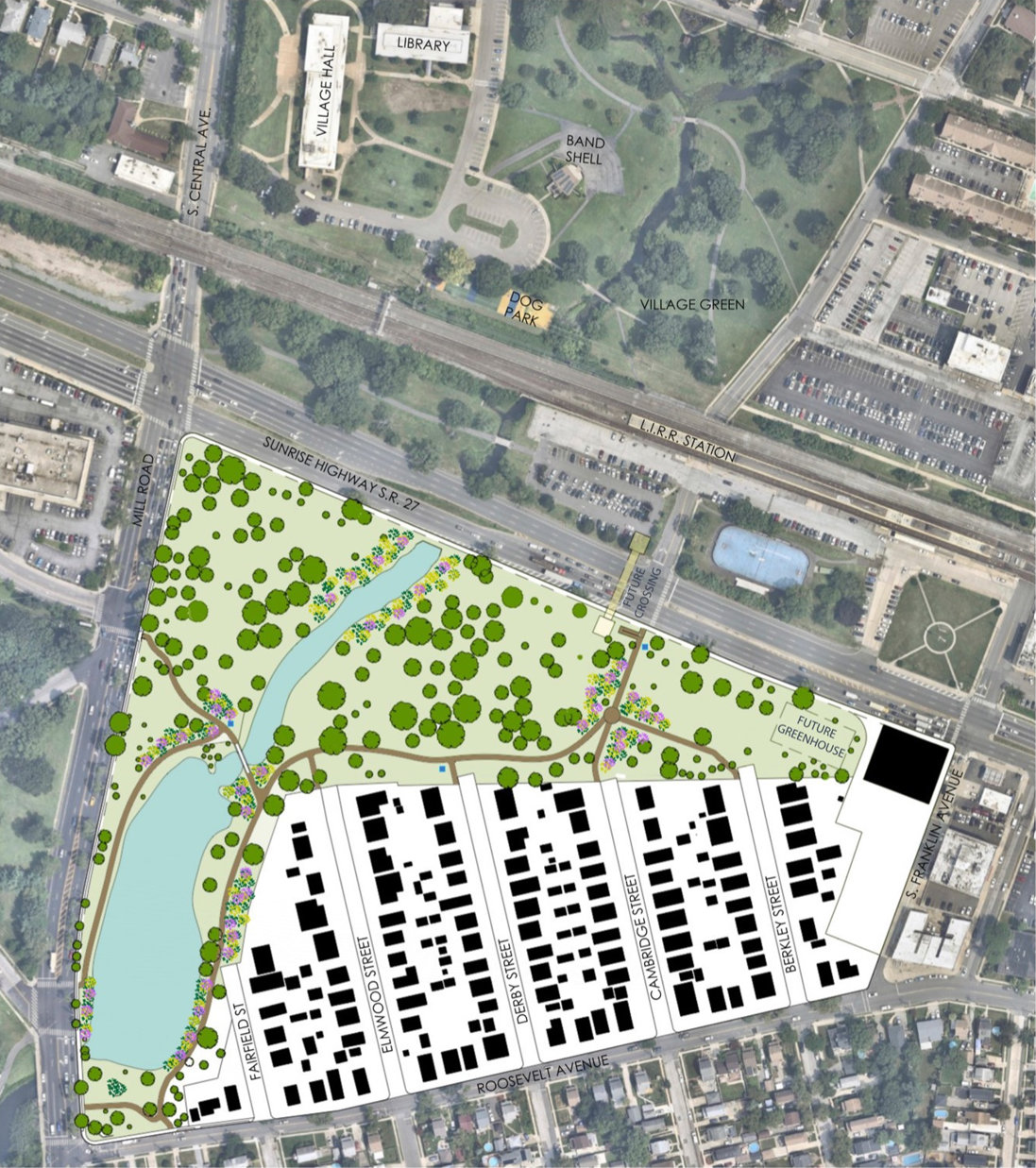Big project could make Cahill park more walkable to LIRR
Getting around is all about cars and anything with a motor. But Valley Stream village officials have a different plan they say could create public spaces that encourage safe, viable and friendly forms of alternative travel — like walking and biking — to get around.
And they got a little help from Gov. Kathy Hochul and the state legislature with $1.7 million at the ready to carve out a series of connected walkways for cyclists and pedestrians that offer direct access to the village’s main Long Island Rail Road station.
The project paves the way for roughly 3,000 feet of off-road paths to run through Edward W. Cahill Memorial Park, connecting pedestrians to surrounding residential streets and thoroughfares.
There could be other benefits as well, officials say, promising to stem the flow of foot traffic away from “car-crowded,” “high-accident” prone streets like the intersection of Central Avenue, Mill Road, and Sunrise Highway, and instead toward the relatively safer intersection of Hicks Street and Sunrise.
The network of pathways ends up at a “‘T-shaped’ intersection that provides greater visibility for pedestrians crossing the highway (to the train station), and makes crossing much safer with updated traffic signals installed by the state transportation department,” said David Sabatino, who is coordinating the project for the village.
Tying in with the village’s larger transit-oriented development efforts, the project is touted by village officials as the “missing link to the train station and downtown.”
"Building a multi-use path to link existing routes to the Long Island Rail Road is a win for the community," said Assemblywoman Michaelle Solages in a statement. "This green infrastructure project fortifies the infrastructure in Valley Stream and will allow residents to more safely use nonmotorized forms of transportation and improve the health of people in the community."
“I feel there’s enough space for walkers (in this area), but I can understand the difficulty for cyclists,” said Keenan Theodore, an LIRR commuter. “If you were to ride a bike on Mill Road or down Central Avenue, you would be concerned for your safety because there are no bike paths. If there is a way to interconnect the small streets to the major avenues, it would make sense for the safety of riders — and even kids who may not commute but need a safe place to ride.”
“I see myself using this,” said another neighbor, Justin Cange. “I’m in favor of more bikes, less cars — anything that reduces traffic.”
Much is still in the air about specifics, including whether the added perks listed on the initial site plan — like a greenhouse education center, and a pedestrian crossing bridge over Sunrise Highway — will make it unto the final blueprint.
But one thing remains clear to Sabatino: “This project will take three years to complete with multiple pauses for review, permitting and construction.”
George Bringmann, who heads the rider advocacy group the Long Island Rail Road Commuter Council, says the roll-out of the new walking and biking installation is a “fabulous” project that will incentivize more people to ride the rails — even as many are still shying away from trains post-pandemic.
Representing the Metropolitan Transportation Authority, which runs LIRR, spokeswoman Kayla Shults praised the Valley Stream project for “helping commuters reach Long Island Rail Road stations, especially in environmentally friendly ways that reduce congestion.”
It’s even more important now as the LIRR prepares to open up service from Manhattan’s Grand Central Terminal.
But the project, Bringmann suggests, won’t be without its own set of challenges and concerns. Once it becomes easier for cyclists and scooters to skirt car traffic by traveling through the park to get to the LIRR station, commuters are likely to see more electric bikes and scooters sharing space on the track, and on board the train.
Because the lithium-ion battery powering an electric bike or scooter has the potential to explode, the MTA is looking into updating its policy to regulate the number of electric scooters and bikes on trains, Bringmann said.
“We’re also, out of safety and convenience concerns, looking into having lockers and racks for the motorized scooters and bikes, because they tend to take up a lot of space,” he said.
And not all are thrilled. Those like Joseph Corrado say the installation will do more harm than good to the park.
“This greenspace is supposed to be a natural area, and now it’ll turn into a commuter-heavy area and a transit corridor,” he told village officials. “That’s not the purpose of the park.”
Others questioned whether the $1.7 million could have been used to place bike lanes throughout the village and rehabilitate the existing vegetation and landscape of its parks.
Nothing is yet in stone, however. Village officials hope to finalize site plans next year.
Have an opinion on the Cahill park project? Send an email to jlasso@liherald.com.

 44.0°,
Mostly Cloudy
44.0°,
Mostly Cloudy 





